
- Laboratory
- A New Paradigm for AI Autonomous Manufacturing
Reading UNIST's “The Future of Manufacturing”
본문영역
A New Paradigm for AI Autonomous Manufacturing
Reading UNIST’s “The Future of Manufacturing”
The domestic manufacturing industry, which began with industrialization in the 1970s through a heavy chemical industry development program, peaked in the 1980s with the rise of large corporations such as Samsung, Hyundai, and LG. Since then, the semiconductor, electronics, and automobile sectors have advanced; nevertheless, the emergence of information and communication technology and the service economy in the 2000s has hindered the growth of the manufacturing sector. Recently, however, the government has pursued a new transition to “AI autonomous manufacturing,” which has resulted in a boom in the manufacturing industry. Thus, we met with Professors Im Doo Jung (Department of Mechanical Engineering) and Sunghoon Lim's (Department of Industrial Engineering) at UNIST to discuss the “paradigm of AI-based manufacturing” and the “vision of the future manufacturing industry” resulting from this development.
- Photo _ Yoo Geun-jong
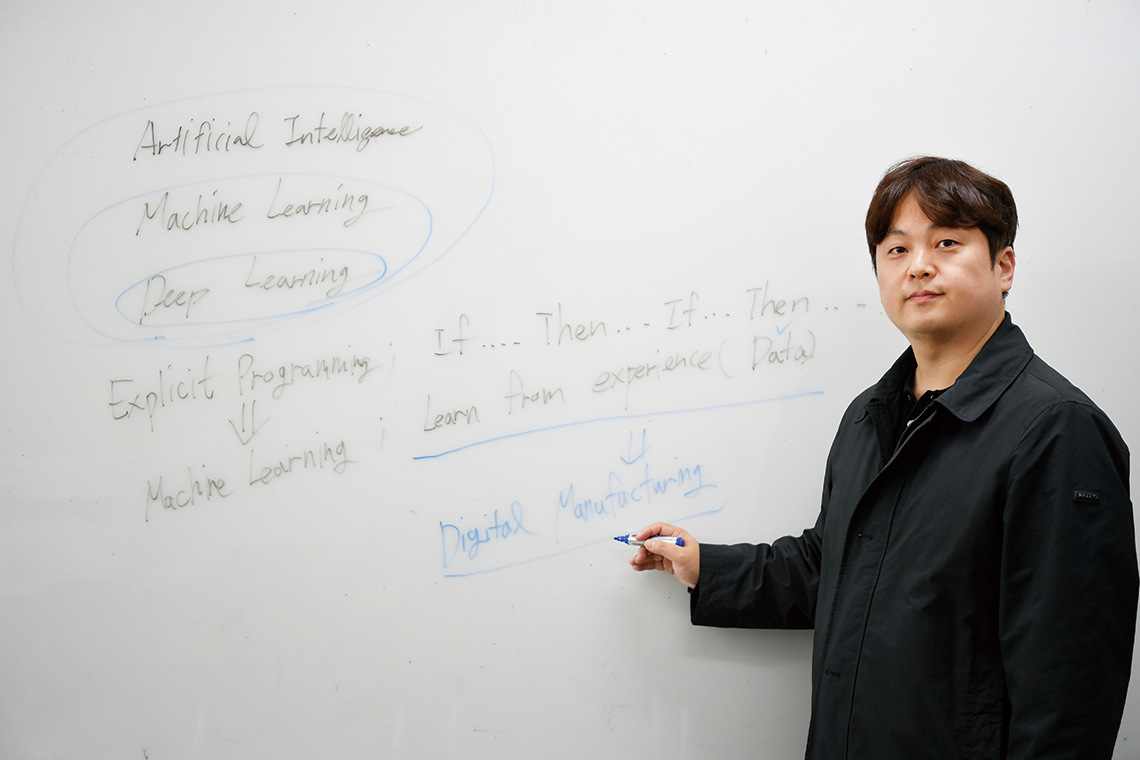
Professor Im Doo Jung’s
AI-based Manufacturing Research
“Faster” and “More Accurate”
Artificial Intelligence and Manufacturing
Artificial intelligence (AI) incorporates human learning and mental processes into algorithms to handle a wide range of real-world issues that are impossible to answer with traditional linear calculations alone. Just as we gain knowledge through experience over a long period of time to be good at something, whether it is through studying or exercising, when we give AI plenty of experience on a given subject in the form of data, AI can demonstrate great intelligence in that area. AI has a significant impact, and countries throughout the world are scrambling to implement it in a variety of industries.
In Korea, 28% of the total industry is manufacturing, which is higher than that of the United States and Europe. Accordingly, the application of AI in the manufacturing industry is directly related to the competitiveness of the country. Large companies, mid-sized companies, and small and medium-sized companies are actively conducting research to increase productivity, improve quality, and maximize safety by applying AI to the manufacturing industry.
Automotive Industry and Artificial Intelligence
Ulsan, where UNIST is located, has the largest automobile industry in Korea. And as a professor in the Department of Mechanical Engineering and Graduate School of Artificial Intelligence, I am developing technologies that will maximize productivity and quality by integrating artificial intelligence into machines such as automotive production equipment.
For example, when various metal parts are continually assembled to form an automobile, it used to be difficult to quickly check for defects in the entire metal part throughout the continuous mass production process. As a result, just one out of hundreds was sampled and evaluated for around 10 minutes.
The errors that were not detected caused problems that would lower the quality of the finished product in the future, and correcting them was costly.
Our research team applied AI to the automotive assembly process to detect defects at a rate that was more than 200 times faster, enabling them to inspect all parts at a low cost accurately, and not just involving a few samples, which led to improved quality and increased productivity.
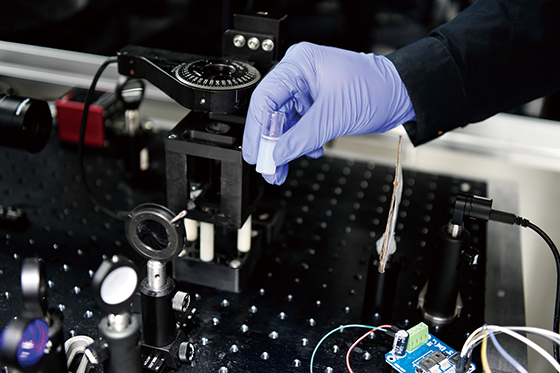
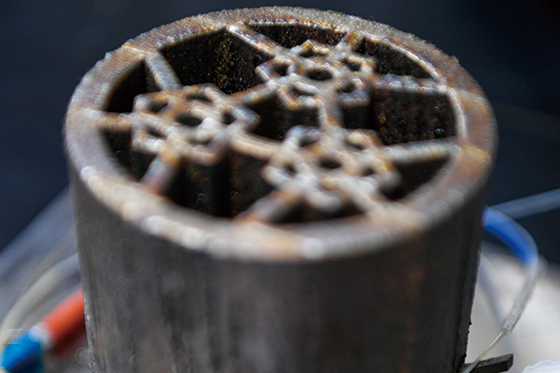
Artificial Intelligence, Mechanical Engineering, and Manufacturing Robots
Mechanical engineers play an important role in the manufacturing industry because they learn and understand thermodynamics, dynamics, statics, and fluid mechanics, and they are adept at understanding and solving problems at the mechanical system level.
In recent years, AI has transformed machines into intelligent machines, boosting the importance of mechanical engineers. Furthermore, programs that can be applied to machines by using AI have emerged, even if you don't know much about coding, and many mechanical engineers are conducting research with AI.
By incorporating AI into robots, they can communicate with humans and execute delicate tasks, such as folding laundry, cooking, and cleaning that previously only humans could accomplish efficiently. It works on the concept that if a human holds a robot's hand and teaches it how to perform a specific task, the robot will be able to perform the task eventually on its own.
In our laboratory, we use this technology so robots can handle dangerous tasks that would normally be done by human hands in manufacturing plants, though they are mostly automated. AI robots teach workers how to work so that they can do their jobs well. This is analogous to a shooter passing on his knowhow to a sub-shooter, rather than a traditional robot that just executes a single maneuver. A robot that has learned enough from a shooter becomes a shooter for other robots, rapidly spreading its intelligence across the facility.
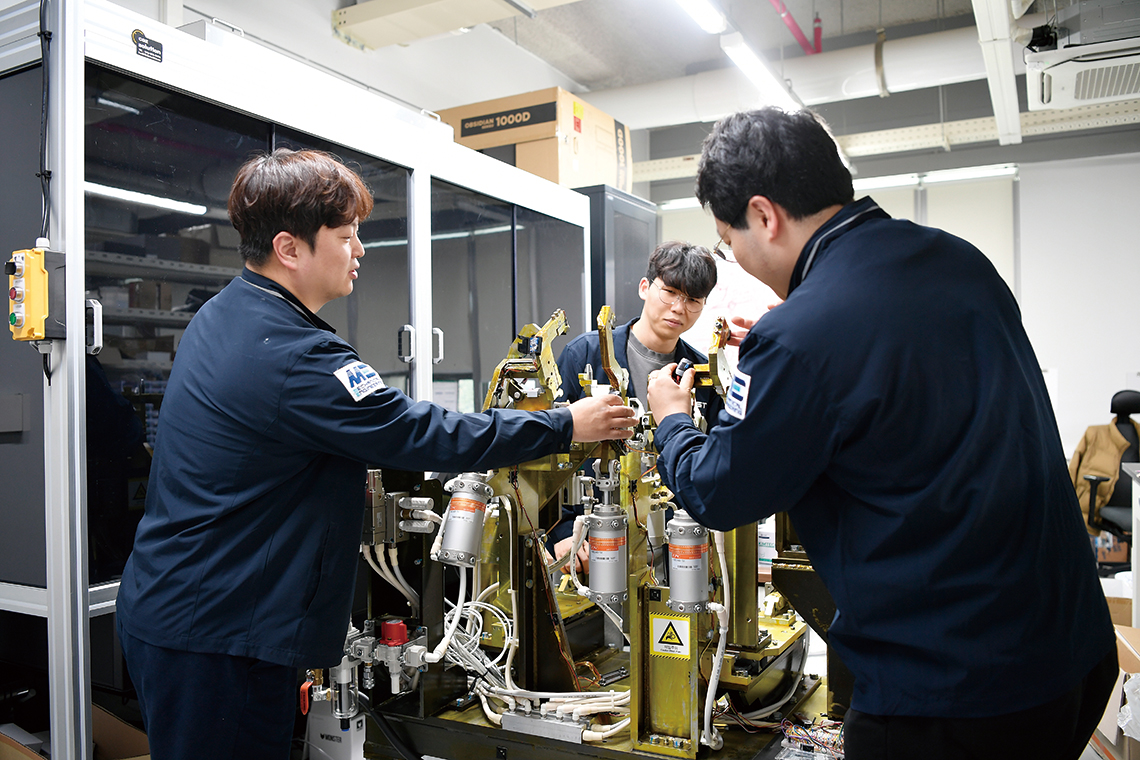
3D Printing and Artificial Intelligence
3D printing technology uses the principle of attaching materials to create mechanical devices that were previously difficult to manufacture. For example, our laboratory recently conducted research on making contact lenses that fit into the eye through 3D printing to provide navigation that guides the way in augmented reality. We have recently published papers and introduced various media outlets regarding this 3D printing technology.
If AI technology is applied to this process, it will be possible to grasp the position and movement of objects in front of smart contact lenses, just as Iron Man can identify the location of enemies in front of him or detect their movements. The results of this study will be published soon.
Recently, technology has been created to print 3D objects more than 100 times faster than before. It was done by attaching one layer to another before, but today it is possible to generate a three-dimensional shape portion in tens of seconds by attaching the full volume at once. AI will be used to develop these manufacturing methods. Soon, you may be able to acquire the parts you need in seconds with the push of a button, just like in a vending machine, rather than waiting a long time for parts to be manufactured.
As such, AI technology not only maximizes the productivity and stability of existing manufacturing technologies, but is also applied to relatively new and advanced manufacturing technologies, such as 3D printing, thus contributing greatly to securing better future new technologies.
Professor Sunghoon Lim's
Future of Smart Manufacturing
Improving “National Competitiveness”
and “Quality of Life”
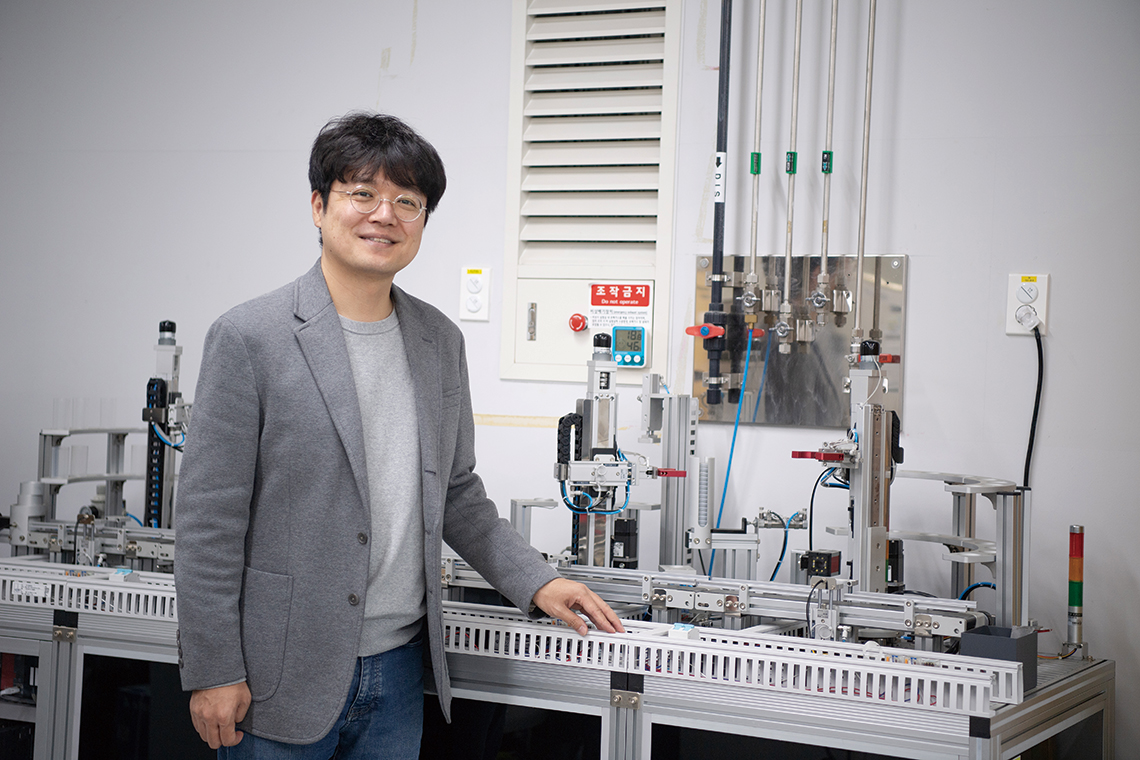
Smart Manufacturing: The Future of Intelligent Production
Our laboratory's research area is “smart manufacturing”. “Smart manufacturing” refers to human-centered, high-tech intelligent manufacturing that integrates all production processes, from product planning to sales, with information and communication technology (ICT) producing customized products at the minimal cost and time. Moreover, a “smart” manufacturing environment means using data and artificial intelligence (AI) to build intelligent and flexible production systems, and to take innovative approaches to the next level of competitiveness in the manufacturing industry.
Both “factory automation” and “smart manufacturing” are similar because they increase efficiency and enhance productivity in manufacturing. However, factory automation is all about automating repetitive tasks, mainly using machines and computers. The third industrial revolution has enabled the automation of manual human jobs with machines and the acceleration of the manufacturing process through the internet and IT systems.
Smart manufacturing, on the other hand, is a concept that extends beyond the automation stage of the manufacturing industry, and achieves intelligence. It is a core concept of manufacturing in the era of the fourth industrial revolution.
It does not only automate the manufacturing process, but also intelligently optimizes the entire manufacturing process by combining it with technologies such as AI, big data, IoT, and edge computing. You may also adapt your production line flexibly and quickly based on real-time data analysis and forecasting, creating an environment where you can generate customized products at the minimal cost and time.
While factory automation focuses on simply replacing traditional tasks with machines, we believe that smart manufacturing leverages data and AI to transform the manufacturing process itself, and contribute to creating new value in the manufacturing industry through intelligent decision-making.
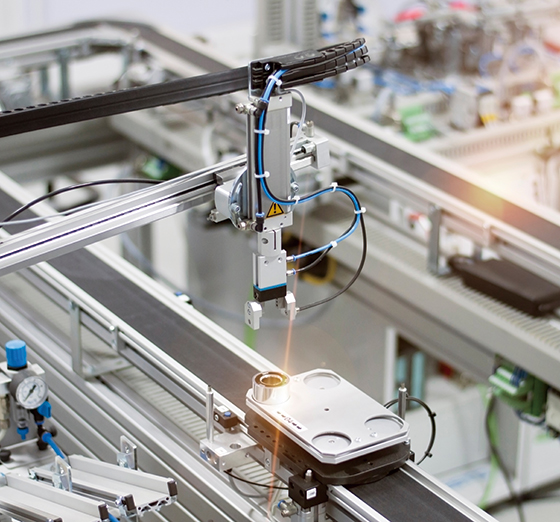
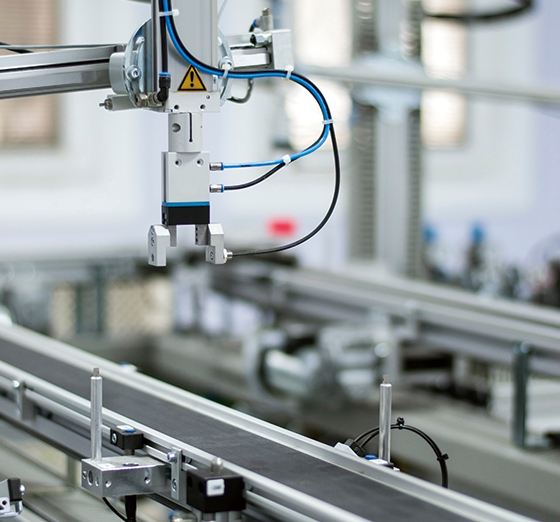
AI and Smart Manufacturing: Key to Transforming Manufacturing
The modern manufacturing industry is undergoing digital transformation to keep up with rapid technological advancements and market shifts. AI is currently being used to intelligently optimize the manufacturing floor, simultaneously improving the productivity and quality of products. Moreover, it is a key factor in determining a company's competitiveness by inducing the creation of various business values, such as cost reduction, increased profitability, improved customer satisfaction, and innovative product design.
As a result, companies can operate their manufacturing environments nimbler and more efficiently, consistently producing high-quality products, and quickly responding to market shifts.
The capacity of smart manufacturing, which is based on AI technology to improve quality while also increasing efficiency, is its key strength. Through industry-academia collaboration with our laboratory, an eco-friendly equipment manufacturer in Busan Metropolitan City has significantly increased quality and productivity by incorporating AI into the UV lamp manufacturing process.
As the accuracy of life forecasting has improved, the average lifespan of ultraviolet lamps also increased, while the cost of test evaluation decreased dramatically. An auto parts manufacturer in Ulsan Metropolitan City has also succeeded in improving quality and productivity by introducing AI to the fusion process of door trims through industry-academia collaboration with our laboratory. Thus, AI is becoming a key technology for optimizing manufacturing processes and improving quality. We expect AI to continue to play an important role in driving innovation in the manufacturing industry, creating new value, and strengthening corporate competitiveness. However, when I consider these possibilities, I am equally concerned with the challenges of integrating AI into the manufacturing industry. To maximize the impact of AI, we must overcome technological and infrastructural limitations, maintain a balance between people and technology, and promote sustainable growth.
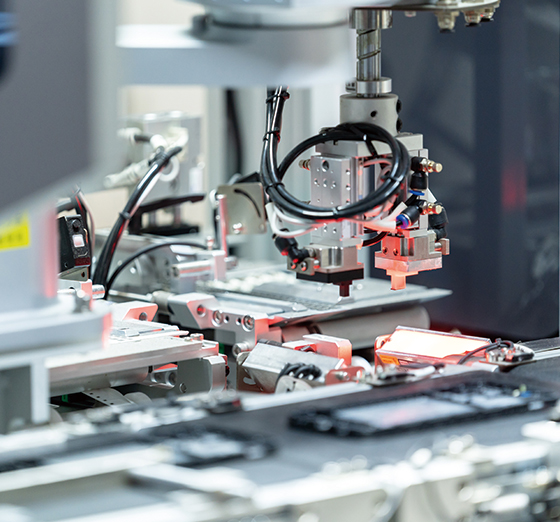
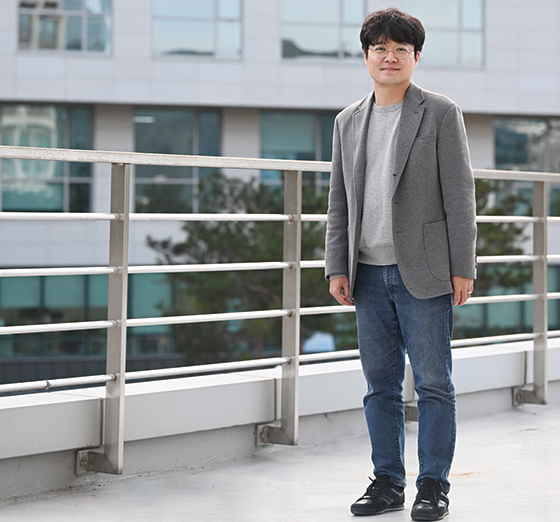
Challenges and Prospects of Smart Manufacturing
I believe that advancements in smart manufacturing technologies, such as AI, will diminish some repetitive, simple low-skilled professions. However, I believe that loss of employment in manufacturing is not commonly feared due to AI advancement. When AI is integrated into existing production lines, people take on a professional role in monitoring the AI system and resolving related issues, rather than performing simple repetitive jobs.
Subsequently, simple problems in traditional manufacturing can escalate into higher-level issues such as data quality, lack of expertise, integration of legacy systems, burden of initial investment, and cybersecurity risks. This is also a problem in the manufacturing industry as it transforms digitally. To overcome this challenge, I believe it is critical to increase the quality of manufacturing data, cultivate talent through industry-academia collaboration, strengthen system integration capabilities, and ensure AI reliability and transparency. To have and implement a long-term digital transformation vision, I also believe that an organizational culture must be established.
Korea's strong interest and investment in AI, digital transformation, and smart manufacturing are likely to drive this development, resulting in increased national competitiveness and improved quality of life.

